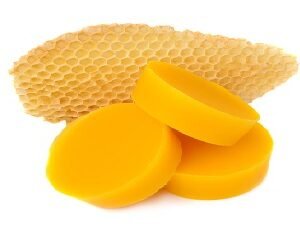Bee venom, also known as apitoxin, is a complex substance produced by honeybees (Apis mellifera) primarily for defense against predators. Here’s a brief description of bee venom:
- Composition: Bee venom is a mixture of various compounds, including peptides, enzymes, biogenic amines, and proteins. The primary components of bee venom include melittin, apamin, adolapin, phospholipase A2, hyaluronidase, and mast cell degranulating peptide (MCDP).
- Effects: When a bee stings, it injects venom into the victim’s skin through its stinger. Bee venom is responsible for the pain, swelling, and inflammation commonly associated with bee stings. In some cases, individuals may experience allergic reactions to bee venom, ranging from mild itching and redness to severe anaphylaxis.
- Medical Uses: Despite its role in bee stings, bee venom has also been studied for its potential therapeutic properties. Some research suggests that bee venom may have anti-inflammatory, analgesic, antimicrobial, and anticancer effects. Bee venom therapy, also known as apitherapy, involves the deliberate injection of bee venom for the treatment of various medical conditions, although its efficacy and safety remain controversial and are still under investigation.
- Bee Venom Collection: Bee venom can be collected from honeybees using specialized equipment designed to stimulate the bees to sting a glass or plastic surface without causing harm to the bees. The collected venom is then processed and purified for various applications, including research, pharmaceuticals, cosmetics, and alternative medicine.
- Safety Considerations: While bee venom can have therapeutic benefits, it can also cause adverse reactions, especially in individuals with bee sting allergies. It’s essential to use caution when handling bees or bee venom and to seek medical attention immediately if stung, particularly if experiencing symptoms of an allergic reaction.
Overall, bee venom is a fascinating and complex substance with potential medical applications, although further research is needed to fully understand its mechanisms of action and therapeutic potential. As with any natural product, it’s important to weigh the risks and benefits and to consult with healthcare professionals before using bee venom for therapeutic purposes.






Reviews
There are no reviews yet.